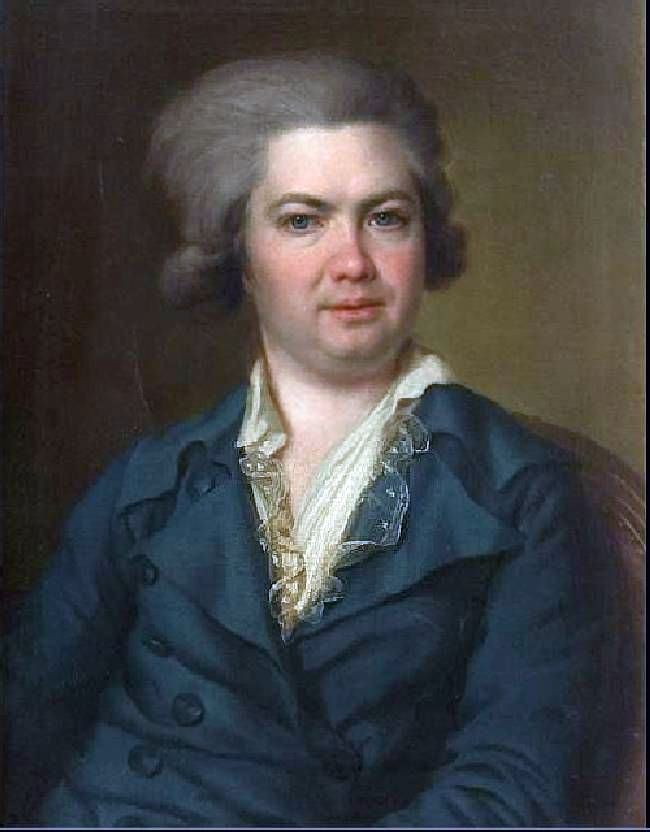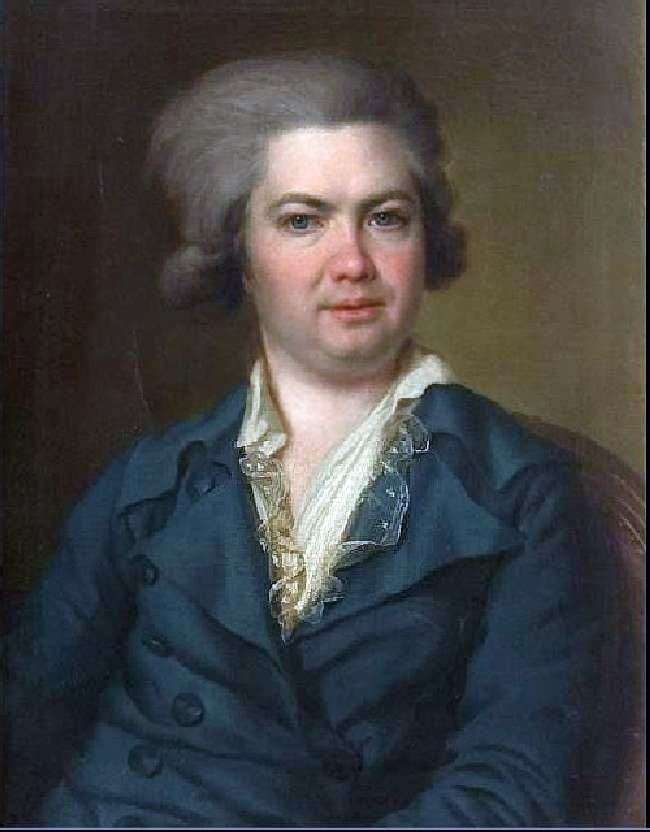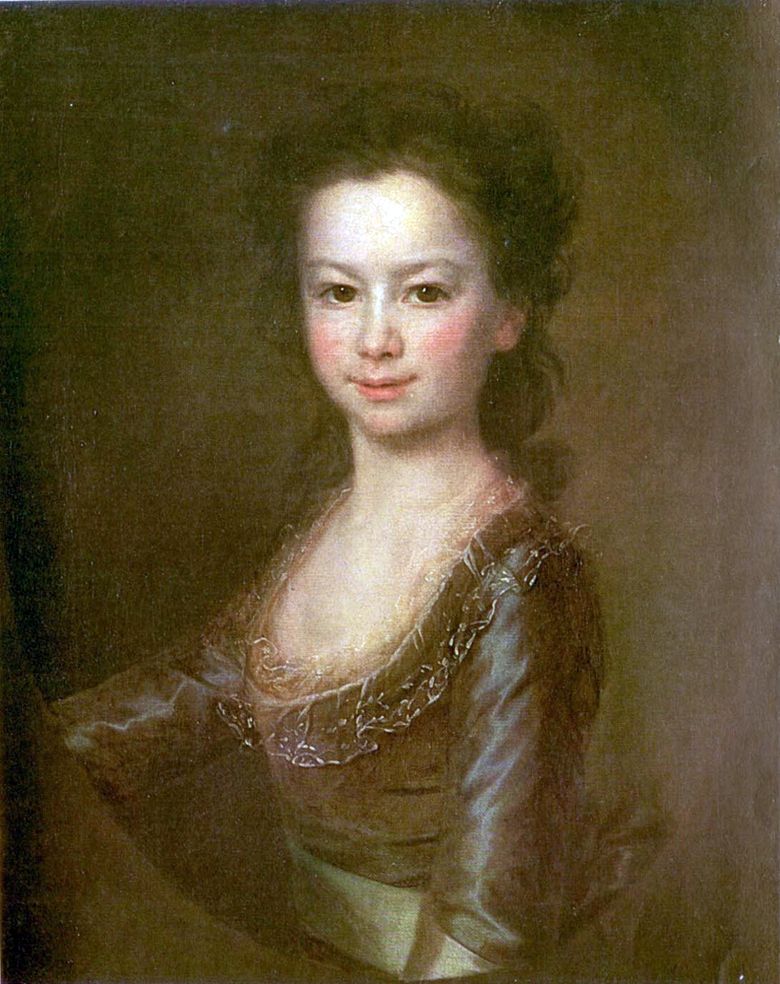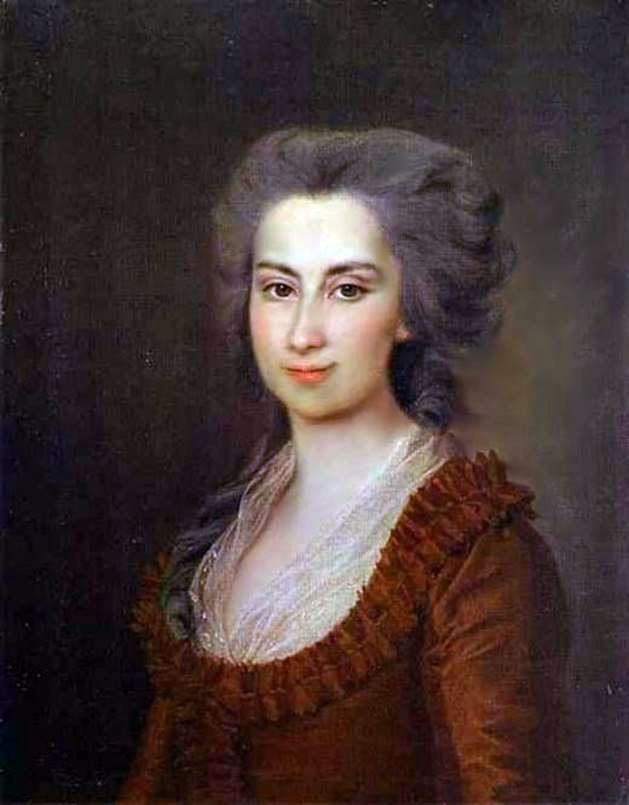
The portrait of A. I. Vorontsov, probably the same as the image of his wife, was intended for a family portrait gallery. In the portrait-in-camera portrait, the artist emphasizes the features of the physical and spiritual image of the person being portrayed: his full and loose face is hardly expressive, there is something apathetic in it. Count Vorontsov-Dashkov Artemy Ivanovich – Count.
Valid Privy Counselor, Senator, Valid Chamberlain. The son of Lieutenant-General Ivan Illarionovich Vorontsov, President of the Military Collegium, and Maria Artemyevna. The grandson of the famous cabinet minister of Empress Anna Ioannovna Artemy Volynsky, the nephew of Chancellor M. I. Vorontsov. From 1765 to 1773 he served in the Life Guards Mounted Regiment. He possessed a significant fortune, in particular, in Petersburg, he owned the Vorontsov Palace, which was subsequently placed at the disposal of the Page Corps.
Towards the end of his life, he went bankrupt and was forced to agree to the marriage of Praskovya’s youngest daughter, with A. U. Timofeev, the son of the Tambov ransomer. Count A. I. Vorontsov, a distant relative and the godfather of A. S. Pushkin, presumably, often came to the German settlement and visited the house of his son-in-law, Count Dmitry Petrovich Buturlin, and the Pushkin family then lived quite close to the Buturlin palace, on the contrary across the street, at the corner of the Hospital Lane and Malaya Pochtovaya Street and, of course, visited the neighbors: after all, D. P. Buturlin was married to Vorontsov’s daughter Anna Artemyevna, a good friend of Nadezhda Osipovna, mother of little Pushkin. Yes, there was not only an acquaintance, but kinship, however, distant: Anna Artemyevna’s mother, Praskovya Fedorovna Kvashnina-Samarina, was the cousin of Maria Alekseevna Hannibal.
In June 1786, A. I. Vorontsov bought from the merchant Krapivin another empty land plot on the bank of the Fontanka. A few months later he ordered the construction of a stone house here. The building was ready by 1787. Having settled here, the count ordered the artist DG Levitsky to portraits of his family members, which were intended to decorate the wall in the new house. Now these portraits are stored in the Russian Museum.
 Portrait of Maria Vorontsova by Dmitry Levitsky
Portrait of Maria Vorontsova by Dmitry Levitsky Portrait de A. I. Vorontsov – Dmitry Levitsky
Portrait de A. I. Vorontsov – Dmitry Levitsky Retrato de A. I. Vorontsov – Dmitry Levitsky
Retrato de A. I. Vorontsov – Dmitry Levitsky Portrait of Praskovya Vorontsova by Dmitry Levitsky
Portrait of Praskovya Vorontsova by Dmitry Levitsky Portrait of P. F. Vorontsova by Dmitry Levitsky
Portrait of P. F. Vorontsova by Dmitry Levitsky Portrait of A. A. Vorontsova as a Child by Dmitry Levitsky
Portrait of A. A. Vorontsova as a Child by Dmitry Levitsky Portrait de Maria Vorontsova – Dmitry Levitsky
Portrait de Maria Vorontsova – Dmitry Levitsky Portrait de P. F. Vorontsova – Dmitry Levitsky
Portrait de P. F. Vorontsova – Dmitry Levitsky